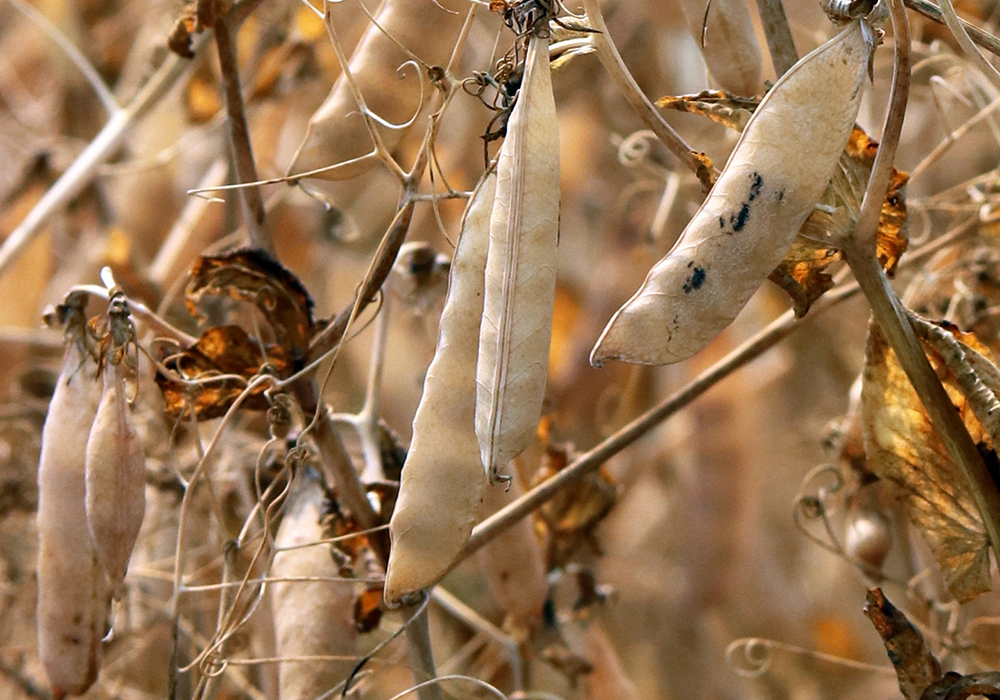American producers say they plan to reduce acres this year, but the same decision isn’t expected north of the border
Don’t expect Canadian pea growers to follow what their U.S. counterparts are doing this spring, says an analyst and an industry official.
Farmers told the United States National Agricultural Statistics Service (NASS) they are going to seed 971,000 acres of the crop, a 12 percent reduction from last year.
Chuck Penner, analyst with LeftField Commodity Research, said there is a different dynamic north of the border, where growers have been better able to weather the storm caused by India’s withdrawal from pulse markets.
China has given Canadian growers a vibrant alternative market for their crops despite flagging feed pea demand in that market because of African swine fever.
Read Also

Critical growing season is ahead for soybeans
What the weather turns out to be in the United States is going to have a significant impact on Canadian producers’ prices
“That demand is actually still very strong,” he said.
The U.S. does not have that alternative outlet for their yellow peas.
“Prices in the U.S. have lagged what’s going on in Canada, so it’s not a surprise then that farmers there have been more discouraged from planting peas this year,” said Penner.
Jeff Van Pevenage, president of Columbia Grain International, one of the largest pulse processing firms in the United States, said it is not a level playing field in China.
U.S. exporters face a 25 percent higher tariff shipping peas into that market than their Canadian counterparts, and that disparity did not change with the recently signed U.S.-China Phase One trade agreement.
That is why yellow pea acres will be down in the U.S., although he thinks the decrease may be a bit smaller than the 12 percent forecast by the NASS.
Contrary to popular belief, the U.S. grows way more yellow peas than green peas. It is typically about a 70-30 split, but this year it could be closer to 60-40.
The increase in green pea acres in both Canada and the U.S. will likely keep the price highs lower than they were in 2019-20, said Van Pevenage.
The NASS is forecasting 474,000 acres of U.S. lentils, a two percent reduction from the previous year, but with grower prices jumping nearly US$100 per tonne last week, he thinks there will be more lentils going in the ground.
He does not anticipate a similar price response for peas to the low acreage estimate.
Penner thinks Canadian pea acres are going to be flat at about 4.33 million acres.
Exports have been strong through the first seven months of 2019-20, according to Statistics Canada.
Canada shipped 2.24 million tonnes of peas over that period, up 22 percent over the same time last year. China has accounted for 1.41 million tonnes of that business.
Van Pevenage agrees with Penner that Canada’s pea acreage will likely remain flat with more greens and fewer yellows.
He estimates that world pea stocks will contract in 2020-21 but the market won’t get “super tight.”
It looks like India will be harvesting a large chickpea crop and will not be in the market for many yellow peas once again.
There was a lot of North American peas going into India through Nepal last year, but that door has closed.
Van Pevenage believes chickpea prices have bottomed out in the U.S. and are set to rebound because farmers have used up carryout stocks accumulated over the past three years.
“It’s not a rocket to the top either but it’s going to get stronger and particularly in the larger caliber, high quality products because that’s going to get tight this year,” he said.


















